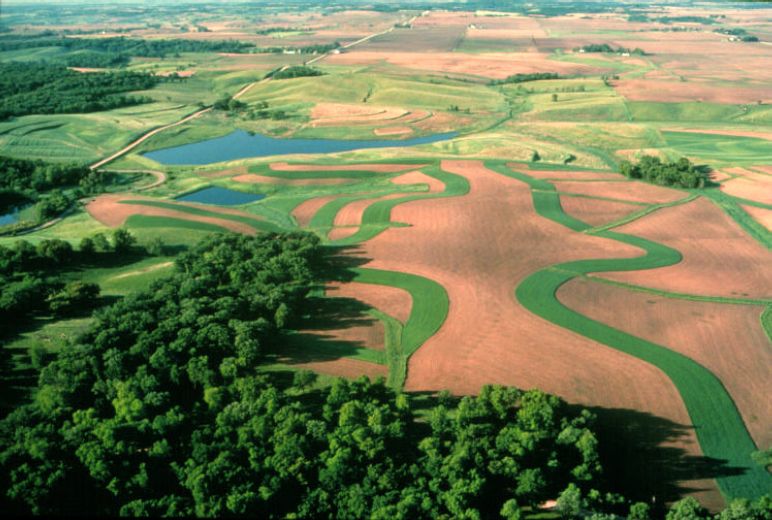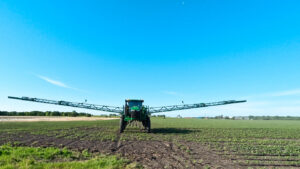The main investment thesis around investing in agriculture technology is the need to feed a growing global population with declining natural resources and increasingly volatile climatic conditions.
Many agtech startups are promising farmers that they can help farmers grow more with less water; fewer chemical inputs —such as fertilizers and pesticides; and even less land.
As you’ll read on the pages of AgFunderNews, these technologies range from robotics to sensors to big data software programmes to biological inputs and more. Many of these technologies target farmers using conventional farming techniques. But there is an alternative farming system that can also help with the same core issues: ecological farming.
In a new whitepaper promoting the system, revealed to AgFunderNews, farmland fund manager SLM Partners argues that ecological farming is a form of agtech.
“Ecological farming is ‘AgTech’ but of a different kind. It is a return to the original definition of ‘technology’, which comes from two Greek words: technis, which means art, skill, craft or the way something is gained, and logos, which means word or thought. ‘Technology’ does not just mean physical objects such as new machines or seeds. It also refers to knowledge or mental objects. Knowledge-intensive farming systems, therefore, are advanced forms of human technology,” reads the report.
Ecological farming is a set of principles which aims to help farmers mimic local ecological processes through an understanding of how the soils, water, climate, vegetation, birds and insects of an agro-ecosystem interact. A large focus is on soil health and the means to increase soil organic matter and biotic activity through the recycling of nutrients from one part of the system to another.
Some of the techniques and practices cited in the report include:
– reduced or zero tillage;
– more complex crop rotations;
– use of cover crops to build fertility and protect soils;
– use of biologically active soil amendments (e.g. composts) to recycle nutrients and suppress soil-borne diseases;
– minimal use of agrochemicals because of their impact on soil biology and biodiversity;
– mixed crop and livestock systems;
– effective utilisation of grassland by livestock species through controlled grazing;
– incorporation of trees and bushes within cropping and livestock systems (agroforestry);
– water conservation and harvesting through landscaping.
“In many cases, multiple techniques are used together. Rather than simply increasing the efficiency of linear processes, ecological farming focuses on redesigning whole systems. The goal is to build a system that is more than the sum of its parts. The mental framework is ‘farm as ecosystem’ not ‘farm as factory’,” writes the report.
Other terms used to describe this alternative farming system include agro-ecology, eco-agriculture, organic, biodynamic, permaculture, conservation agriculture, regenerative agriculture, biological farming, ecological restoration, and low input sustainable farming.
This method, or methods of farming, were first flung into the mainstream in September 2014 when the Food and Agriculture Organization’s director-general José Graziano da Silva called for a ‘paradigm shift’ towards sustainable agriculture, and a move away from the use continued use of chemical inputs. “We cannot rely on an input intensive model to increase production,” said Silva. “The solutions of the past have shown their limits.”
It’s also becoming more mainstream in the investment market, according to SLM, which cites seven investment managers, with a combined $500 million of assets under management, that are approaching agriculture through an ecological lens.
It’s not ‘anti-science’ or a ‘back to the land hippy’ way of operating as its deep science and knowledge-intensive base proves, SLM argues.
“It’s this need for knowledge and a deep understanding of ecology that makes ecological farming a technology,” Paul McMahon, managing director of SLM, tells AgFunderNews. “Through this, we can minimize the need for chemical inputs and machines, and get the best agricultural output at lower costs and lower risk.”
But is there a role for the growing number of agriculture technology startups in ecological farming? Yes, but not the majority of technologies on the market today, McMahon argues.
“The definition of agtech today is supporting industrial agriculture,” he says. “Precision agriculture is typically helping farmers find more efficient ways to manage their chemical-based farming systems, rather than helping them to re-design the whole system not to need those chemicals.”
“But, there is a certain amount of technology that could support ecological farming practices,” he adds. “Robotics are fascinating and could help manage land with fewer chemicals. Big data could be harnessed to help farmers really understand their complex soils, through biological sensors that track bacteria concentration or fungi levels or soil compaction. But just measuring N-P-K levels, which many technologies today do, is just the tip of the iceberg of what’s going on in the soil.”
Ecological farming is particularly timely in the wake of the Paris climate change agreement that placed an emphasis on the importance of storing more carbon in the earth’s soils as a means of removing it from the atmosphere and keeping increasing global temperatures at bay.
“We are going to see a global effort to store more carbon in forests and soils through planting trees, engaging in agroforestry, using less tillage, and use of organic fertilisers and composts to build up soil biology. Chemicals destroy soil carbon,” says McMahon. “Livestock are another key way of putting carbon in the soil, so converting arable farmland to grassland, or engaging in crop rotations with livestock pasture, will also store more carbon in the soil.”
The Australian government’s Carbon Farming initiative allows farmers to earn carbon credits for storing carbon and reducing greenhouse gas emissions. And its A$2.55 billion ($1.8 billion) Emissions Reduction Fund (ERF) will purchase such credits, giving farmers another source of revenue.
SLM currently manages a $80 million beef cattle farmland fund in Australia, which is tapping into this initiative. Following a method called holistic planned grazing, first promoted by Allan Savory, the ecologist, farmer, and environmentalist, SLM keeps cattle densely congregated, in prescribed and relatively small tracts of land, moves them frequently, and allows land to rest for extended periods. The basis of this approach is to mimic herd movements in the wild, allowing cattle to return fertility to the soil with their manure, stimulate biological activity through grazing, break the soil surface and press in seeds with their hooves, all of which improves water retention but also generates soil carbon.
SLM will supply ERF with over two million tonnes of CO2 credits over the next 10 years, which will translate into added returns for its investors, which include the Danish pension fund PKA. Expect increasing numbers of initiatives like this worldwide as international efforts to tackle climate change gather pace, reads the report.
The potential for revenues from generating positive externalities like carbon storage is one of SLM’s ‘seven reasons to go ecological’. The others are: comparable or better yields than conventional farming; lower operating costs; enhanced natural capital — soil, biodiversity, water and ecosystem functionality; climatic resilience; access to higher value markets — such as organic; and higher profitability.
Holistic planned grazing is not the only ecological farming case study showcased by SLM in the report. It also includes examples of no-till cropping with diverse cover crops, agroforestry, low input pasture-based dairy, and certified organic agriculture.
For more detailed information about ecological farming, read the report here.
What do you think? Is ecological farming another form of agtech? Email [email protected] with your thoughts.




